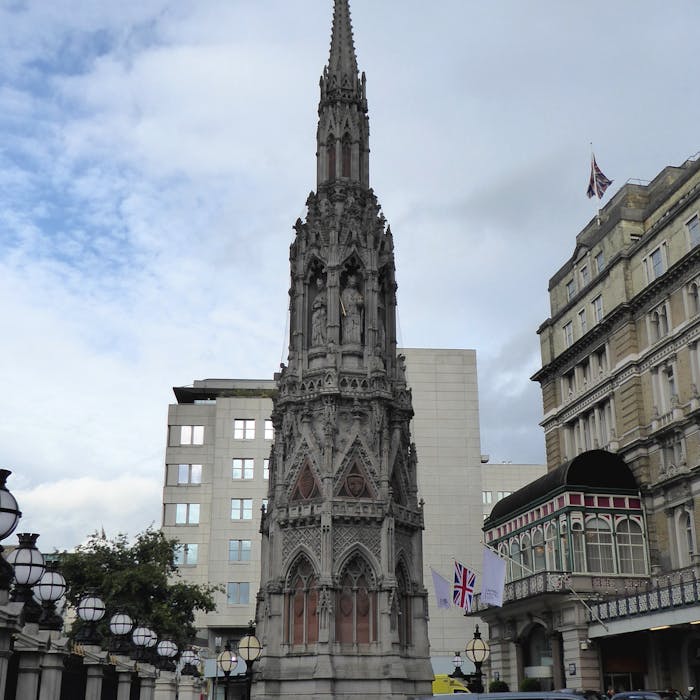
Charing Cross
Charing Cross Road and Charing Cross Railway Station in London are named after a medieval symbol of love and grief.
In 1290, King Edward I’s wife Eleanor of Castile died on the way north to meet him at the age of 48.
As the King returned to London with the body of his beloved Queen, he gave orders that a memorial cross be erected at every overnight stop in her memory.
There were 12 crosses in total and the work was not completed until 1294.
Each cross was different, and only three of the originals now remain. Most of the others were destroyed in the English Civil War - including the final and most elaborate cross which was at the top of Whitehall in London, which was destroyed in 1647. The cross which is nearby today, amongst the taxis on the station forecourt, is a Victorian version. and is more ornate than the original, featuring eight statues of Eleanor with kneeling angels at her feet.
Further Reading
Links to external websites are not maintained by Bite Sized Britain. They are provided to give users access to additional information. Bite Sized Britain is not responsible for the content of these external websites.
